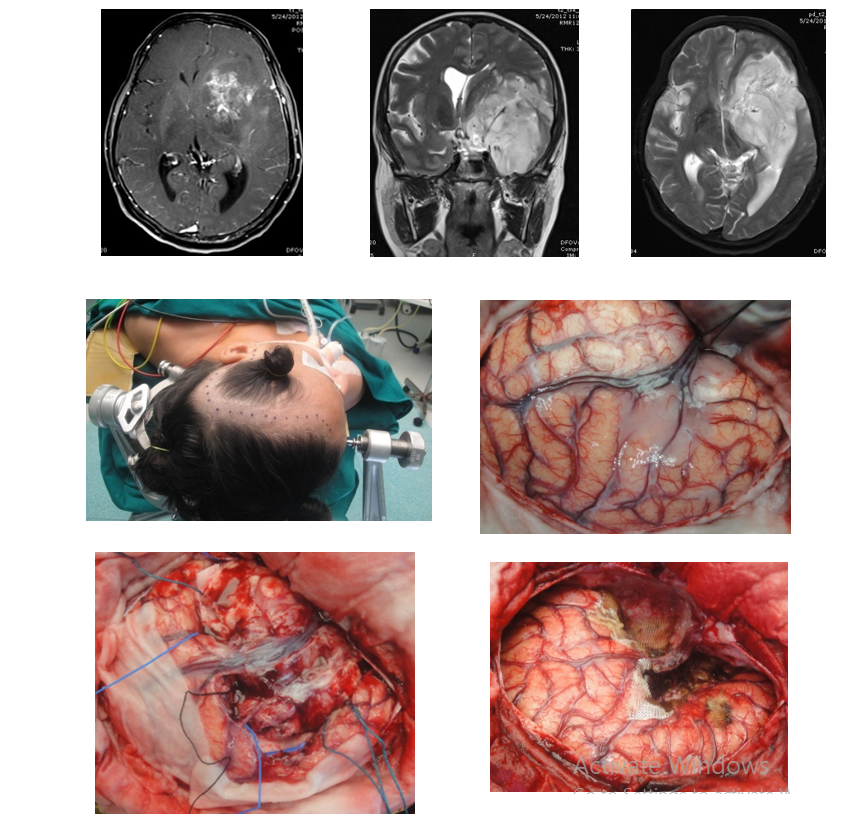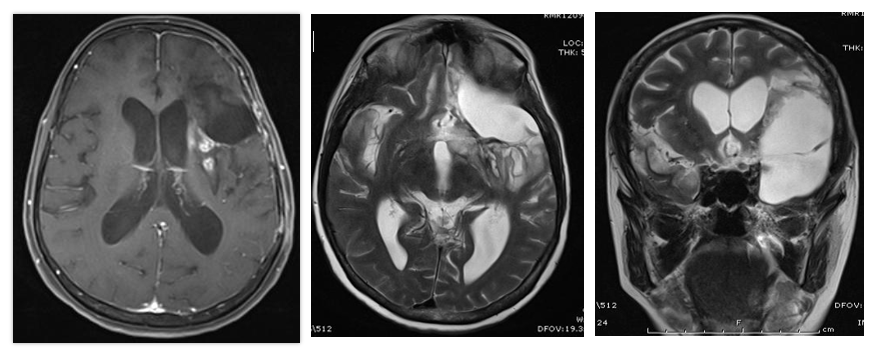Brain gliomas are second commonest brain tumors after metastases.
They can present as a minor headache to loss of consciousness.
They are divided depending upon cells of their origin
- Astrocytes- Astrocytoma
- Oligodendrocytes- Oligodendndrogliomas
- Ependymocytes- Ependymomas
Out of all Astrocytomas are commonest amongst gliomas.
They are further classified as
- Grade 1- Pilocytic astrocytoma, DNET
- Grade 2- Astrocytoms, Oligodendgrogliomsa
- Grade 3- Anaplastic Astrocytomas, Anaplastic oligodendrogliomas
- Grade 4- Glioblastoma multiforme (GBM)
Life expectancy worsens with increase in the grade of the gliomas.
Grade | Life expectancy |
Grade 1 | Near normal or 35 yrs |
Grade 2 | 15-17 yrs |
Grade 3 | 5-7 yrs |
Grade 4 | 6months to 1 year |
Treatment options-
- Microsurgical excision-
Most important option at present.
It gives histopathological diagnosis i.e. the nature and grade of the tumor
Helps in cytoreduction by removing portion of tumor or complete tumor removal
- Radiation-
Most of the tie is an adjuvant treatment
Help in controlling the disease after surgical excision.
- Chemotherapy-
It enhances the effect of radiation, hence a low dose Temozolomide®is often given during the radiation cycles.
High dose of Temozolomide is offered after completion of radiation, mostly for 6 months.
Glioblastoma Multiforme
55 M
Focal seizures since 6months
Right side weakness since 15 days
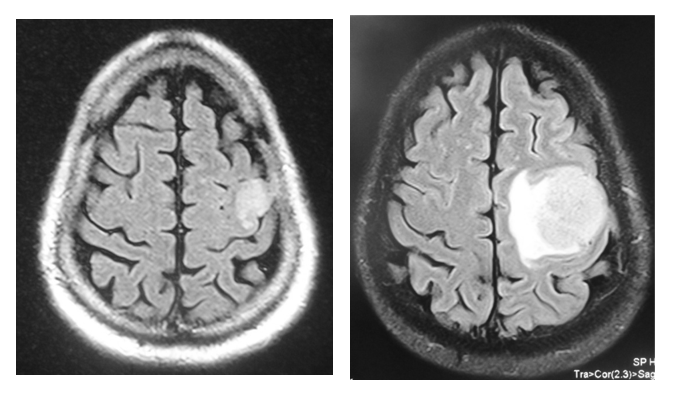

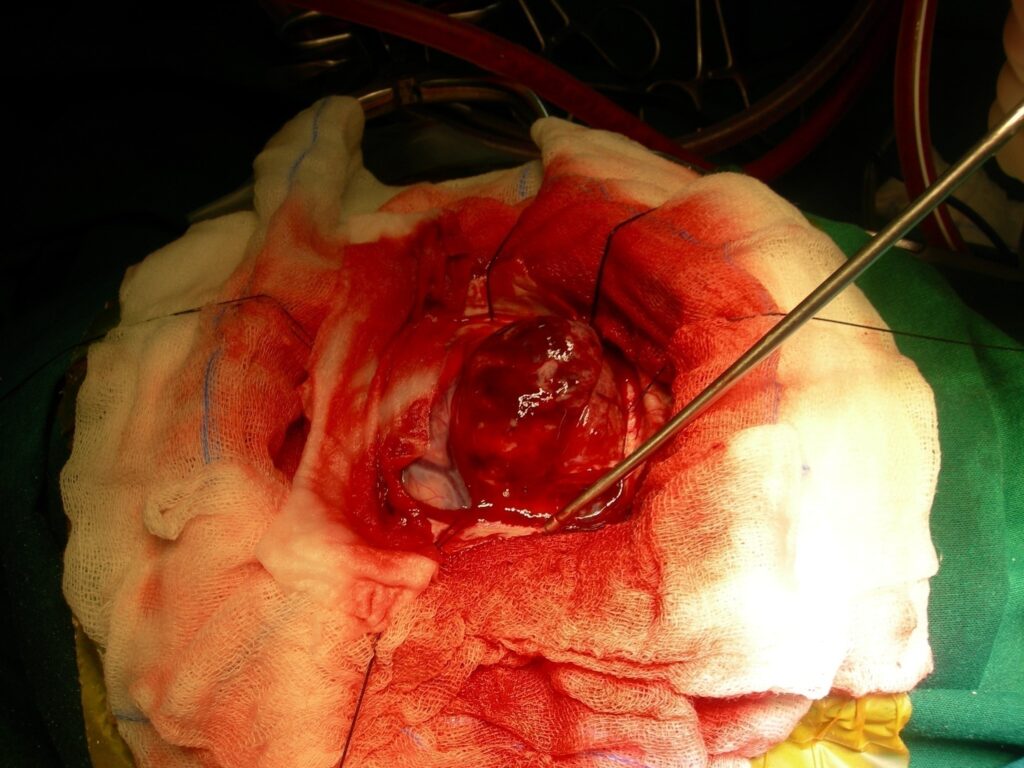
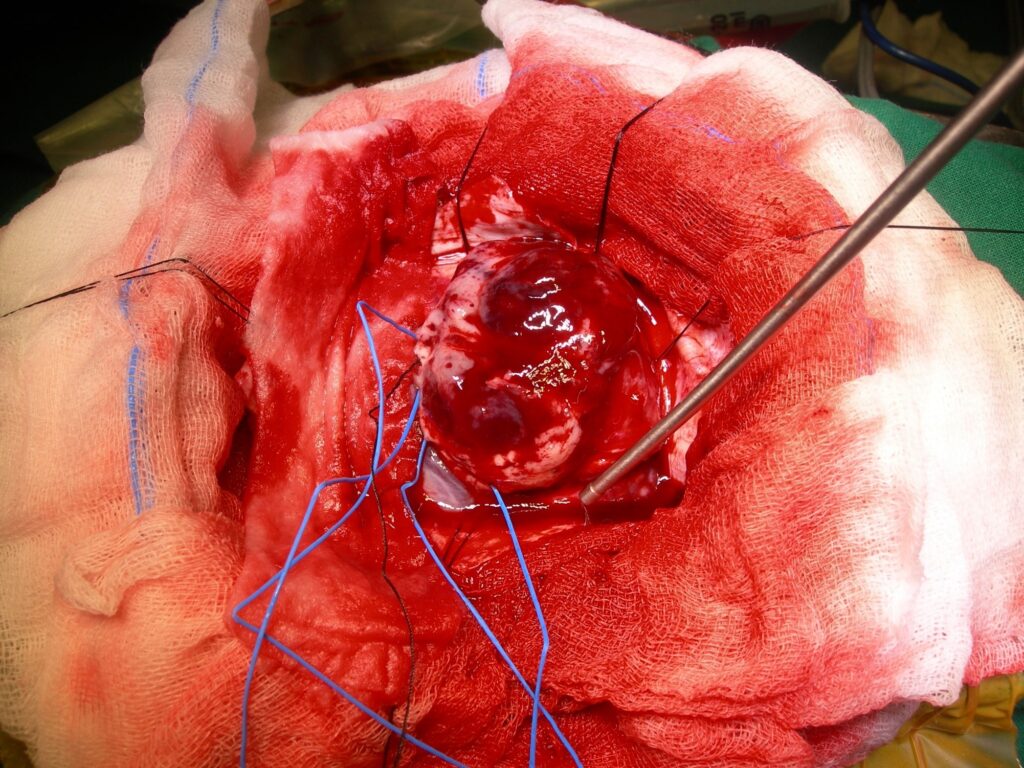
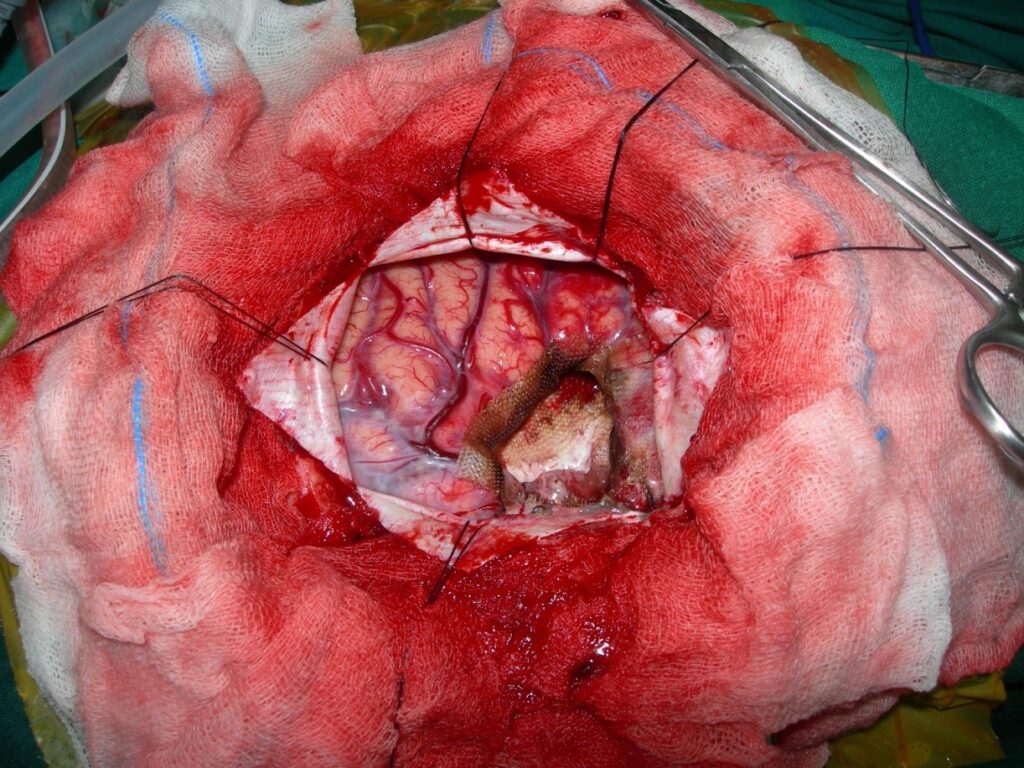
Grade 3 Astrocytoma-
45 / F
Weakness right side
Dysphasia
